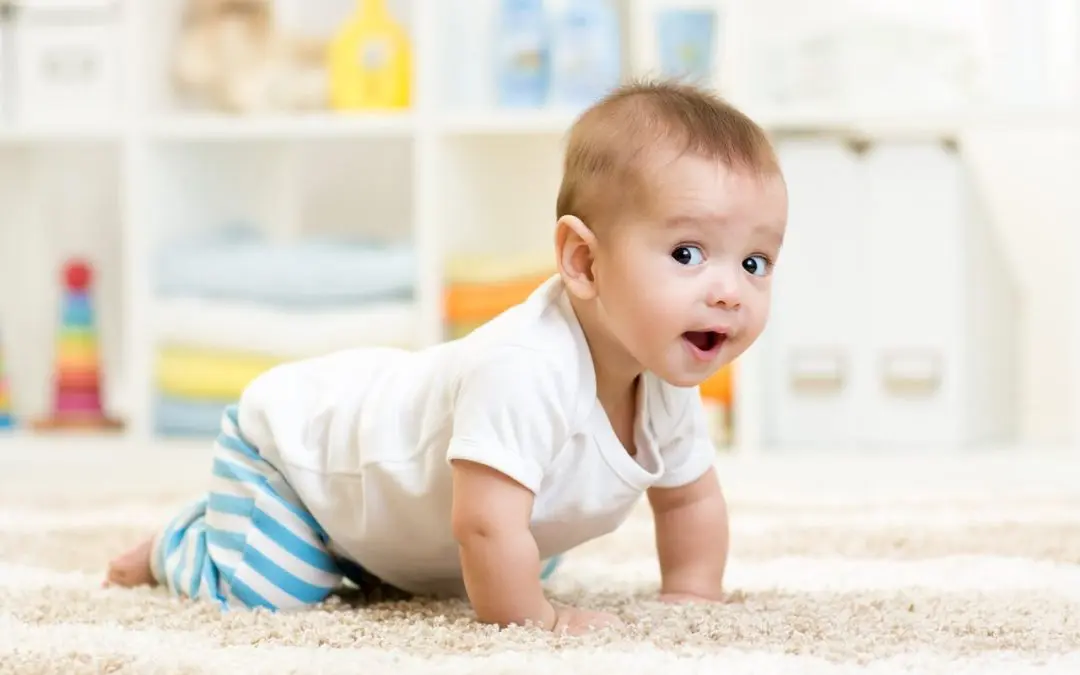You’ve just brought home your newborn and have all the basic safety necessities like smoke alarms, carbon monoxide detectors, and emergency contact numbers posted. Although your infant can’t roll over yet, it won’t be long before he or she is scooting, crawling, and toddling about. If you haven’t already, now is the time to make sure your home is safe for infants and toddlers. Use the following 10 tips to babyproof your home.
1. Anchor Heavy Objects to Babyproof Your Home
Normally around the age of nine months, your baby will start using furniture to pull themselves up. Now is the time to make sure bookshelves, TVs, entertainment centers, and other heavy furniture pieces are anchored securely to the wall. Remove lamps, TVs, and other heavy items from furniture surfaces. Put corner bumpers on furniture with sharp edges.
2. Secure Cords and Wiring
Loose, dangling computer cords and tangles of wiring pose several safety issues from strangulation to electrical hazards. Fasten cords against the wall with cable clips or cord holders. If you have blinds or drapes with cords, replace them with cordless options.
3. Practice Electrical Safety
Babyproof your home by covering all exposed electrical outlets. Look for the ones that screw on or require both hands to remove. Small covers that plugin can be taken off more easily and pose a choking hazard to infants. Place heavy furniture in front of outlets for further protection.
4. Bathroom Safety
Toddlers can drown in just a few inches of water. Always keep toilet lids closed and secure them with a lid lock. Never leave your baby unattended while bathing. Keep all medications in a locked cabinet. Get rid of expired medications through a drug take-back program.
5. Lower the Hot Water Setting to Babyproof Your Home
Emergency rooms treat hundreds of children under the age of five for scalds every year. Toddlers love to play with things that turn like knobs. Prevent injuries by turning down the thermostat on your water heater to less than 120 degrees.
6. Storing Household Cleaners and Chemicals
Always store cleaners and dangerous chemicals in locked cabinets. Look for safety latches at your home store that lock automatically upon closing. Store dangerous items in high cupboards for added safety.
7. Crib and Nursery Safety
Only use a crib that has fixed rails. Dropdown rails have been banned, but if you must use a hand-me-down crib, you can get an immobilizer for the drop-down rail. Make sure your baby’s head can’t fit through the slats.
Don’t put pillows and stuffed toys inside the crib. Babies can be smothered by them. Don’t place the crib or other nursery furniture near windows. Babyproof your home and nursery with childproof screens and window guards.
8. Toy Safety for Babies
Toys are important for a baby’s development but choose them wisely. Stick with toys from major manufacturers who test them for safety. Mobiles are great for visual stimulation, but remove them from the crib when your baby is able to push up on her hands and knees.
Check smaller toys for choking hazards. If they can pass through an empty toilet paper roll, they’re too small. Check stuffed animals and dolls for loose features and discard them if safety is questionable.
9. Use Safety Gates
Babyproof your home by installing safety gates at the top and bottom of stairways. Stay away from accordion-style gates because a baby’s head could get stuck in them. Instead, look for the ones that attach to the wall and swing open and closed.
10. Put Away the Tablecloths to Babyproof Your Home
The last tip to babyproof your home is often overlooked. Toddlers can pull the hems on tablecloths and cause objects on the table to go flying. Use vinyl, no-slip placemats instead.
Prudent Home Inspections provides home inspection services to the Washington DC metro area. Contact us to schedule an appointment.
